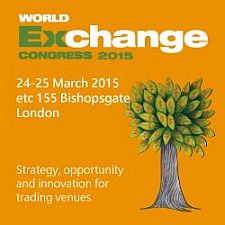Bombay Stock Exchange (BSE)
 |
Website: Bombay Stock Exchange Contact: Bombay Stock Exchange Map: Bombay Stock Exchange Map |
The Bombay Stock Exchange Ltd (BSE)
BSE is the oldest stock exchange in Asia with a rich heritage. Known as the “BSE”, it was established as “The Native Share & Stock Brokers Association” in 1875. It was the first stock exchange in the country to obtain permanent recognition in 1956 from the Government of India under the Securities Contracts (Regulation) Act, 1956.The Exchange’s pivotal and pre-eminent role in the development of the Indian capital market is widely recognized and its index, SENSEX, is tracked worldwide. Formerly an Association of Persons (AOP), the Exchange is now a demutualised and an entity incorporated under the provisions of the Companies Act, 1956, pursuant to the BSE (Corporatisation and Demutualisation) Scheme, 2005 notified by the Securities and Exchange Board of India (SEBI).
BSE provides an efficient and transparent market for trading in equities, debt instruments and derivatives, and the systems and processes of the Exchange are designed to safeguard market integrity and enhance transparency in operations.
Trading System
The BSE has an automated screen based trading systems, which allow orders to be placed at a “pre-determined” or “best” price. The automated screen based trading system for BSE is known as the BOLT (BSE on Line Trading) system
The online trading systems follow the principles of an order driven market which facilitates efficient input of orders and automatic matching, resulting in faster execution of orders in a transparent manner. The member-brokers enter orders for purchase or sale of securities from work stations connected to the exchange trading systems. Order matching is anonymous (i.e. the orders are matched by the exchange system) and the identity of the counter-party is not revealed.
Orders are assigned a unique order number by the trading system (for a member broker, security and transaction type) and time-stamped on entry by the member broker by the trading system. The orders are processed for potential match. Pending orders are stored in different ‘books’ based on price-time priority in the following sequence:
* Best Price
* Within Price, by time priority.
Price priority - of two orders entered into the system, the order with the best price gets the higher priority for trade matching.
Time Priority - of two orders having the same price, the order entered earliest gets the higher priority for trade matching.
Order Matching - The trading system sorts pending orders in price-time priority for order matching purposes by matching the best buy order and best sell order. Best buy order is the one with the highest price and the best sell order is the one with the lowest price (the system sorts buy orders from the seller point of view and vicé versa). Orders may match with more than one order resulting in multiple trades for an order.
Member broker can place market orders (which will be matched with the best available order) or limit orders (wherein member can specify the price for the order) which will remain a part of order books until matching.
Additionally, member brokers can place conditions at the time of order entry. These conditions are as under:
* Time Conditions: These conditions, as the name suggests, can be classified as Day orders, Good till Canceled, Good till Date order and Immediate or Cancel order.
* Price conditions: This permits members to specify conditions to execute the trade at specified price or best price. Members can also place stop loss orders.
* Quantity conditions: The member can disclose a part of the order quantity to the market. For example, an order for quantity 1000 at a limit price can specify a disclosed condition of quantity 200. This will ensure that only 200 quantity at a point of time is displayed to the market. Once this quantity is traded, another quantity 200 is automatically released and so on till the full order is executed. The Exchange may set a minimum disclosed quantity criteria from time to time.
* Minimum FII: these orders allow the trading member to specify the minimum quantity by which an order should be filled.
* All or none orders: all or none orders allow a trading member to impose the condition that only full order should be matched against.
[Please note that debt securities are mainly negotiated bilaterally and subsequently reported to the stock exchanges.]
Trading Hours
Equities:
Monday to Friday
Order Entry Period: 9:00 - 9:07/08
Order Matching & Confirmation Period: 9:08 - 09:12
Buffer Period: 09:12 - 09:15
Continuous Trading Session: 09:15 – 15:30
Closing: 15:30 - 15:40 (VWAP closing price calculation)
Close: 15:40 - 16:00 (execution of trades at the closing price determined)
Debt:
Monday to Friday – 10:00 to 15:30
Saturday – 10:00 to 14:00
Futures and options:
Monday to Friday
Pre-open session 09:00 - 09:15
Continuous Trading Session: 09:15 – 15:30
Closing session 15:30 - 15:40
Post-closing session 15:40 – 16:00
Security Identifiers
ISIN (International Securities Identification Numbering): Is used for all equities and dematerialised debt. Physical debt does not bear ISIN.
Other: Government Securities are identified by the Loan Code assigned by RBI. Treasury Bills are identified by their maturity date and tenure.
Instruments
Equities: Ordinary shares, preference shares, participating preference shares, cumulative preference shares, cumulative convertible preference shares, warrants, rights renunciations
Debt: Loans, debentures, convertible bonds, zero-coupon bonds, public sector undertaking bonds, State and Central Government bonds
Money Market: Government Securities, Treasury bills, commercial paper, bonds, bills of exchange and promissory notes.
Derivatives: Index Futures and Options, Single Stock Futures and Options, Interest Rate Futures
Other: Mutual Fund units, Exchange Traded funds
Board Lots
Equities: In the dematerialized segment, a board lot is one share.
Physical shares: 5, 10, 50 and 100 shares, odd lots can be sold, typically at a discount to current price. (However trading in physical segment is not open to Institutional investors. Institutions are allowed to sell physical securities provided the security is not connected to both / one of the depositories)
Debt: Board lots vary according to type of debt security.
Derivatives: Lot sizes for derivatives are defined for each underlying security by the Exchanges.




